Superfund Sites in Reuse in Virginia
If you are having trouble viewing the map in your browser, click the 'View larger map' link below
Abex Corp. 

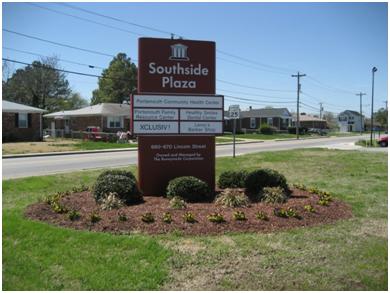 Abex Corp.The Abex Corp. Superfund site is in Portsmouth, Virginia. A brass and bronze foundry operated on the site for 50 years. The foundry recycled used railroad journal bearings and recast the metal to make new bearings. The disposal of foundry waste sands and emissions from the smelting furnaces contaminated on-site soil, surrounding residential yards, a small playground and a rehabilitation center. In 1990, EPA placed the site on the National Priorities List (NPL). Under EPA oversight, the potentially responsible party cleaned up 3 acres of the site. Cleanup activities included demolishing foundry buildings, removing contaminated soil and restricting land use. Cleanup and investigation activities continue at other areas on site. Successful cleanup enabled reuse of the cleaned-up area for public service, commercial, industrial and recreational land uses. In 2001, the local community opened a fire department headquarters and training facility at the site. The redevelopment of the site also included the not-for-profit Hampton Roads Community Health Center, a shopping center, other retail stores, a beverage distribution center and green space.
Abex Corp.The Abex Corp. Superfund site is in Portsmouth, Virginia. A brass and bronze foundry operated on the site for 50 years. The foundry recycled used railroad journal bearings and recast the metal to make new bearings. The disposal of foundry waste sands and emissions from the smelting furnaces contaminated on-site soil, surrounding residential yards, a small playground and a rehabilitation center. In 1990, EPA placed the site on the National Priorities List (NPL). Under EPA oversight, the potentially responsible party cleaned up 3 acres of the site. Cleanup activities included demolishing foundry buildings, removing contaminated soil and restricting land use. Cleanup and investigation activities continue at other areas on site. Successful cleanup enabled reuse of the cleaned-up area for public service, commercial, industrial and recreational land uses. In 2001, the local community opened a fire department headquarters and training facility at the site. The redevelopment of the site also included the not-for-profit Hampton Roads Community Health Center, a shopping center, other retail stores, a beverage distribution center and green space.
Last updated September 2019
As of December 2019, EPA had data on 9 on-site businesses. These businesses employed 128 people and generated an estimated $21,081,000 in annual sales revenue. For additional information click here.
For more information:
- Reuse and Benefits to the Community: Abex Corporation Site (PDF) (8 pp, 267 K, About PDF)
- Superfund Site Profile Page
Arrowhead Associates, Inc./Scoville Corp.
The 30-acre Arrowhead Associates, Inc./Scovill Corp. Superfund site is located in a rural area of Westmoreland County, Virginia. From 1966 to 1979, Scovill Corp. and later Arrowhead Associates, Inc. used the facility at the site to manufacture cosmetic cases using electroplating, lacquering and enameling processes. After plating stopped, the company abandoned machinery and process materials. Beginning in the early 1980s, Mattatuck Manufacturing made automobile wire harnesses on part of the site until 2005. A.R. Winarick used another part of the site to fill cosmetic cases until the mid-1990s. Under permit, site operators discharged treated electroplating wastes to the nearby stream, the Scates Branch. In 1986, Scovill conducted a two-phase removal action at the site as part of an Administrative Order on Consent with EPA. Testing found a groundwater plume under the site, which extends off site and into the Scates Branch and the South Fork Scates Branch. Studies also showed contamination in the former disposal ponds. EPA placed the site on the National Priorities List (NPL) in 1990. Cleanup activities included groundwater treatment with a reactive barrier wall, an impermeable surface cap and a soil vapor extraction system. In 2010, a five-year review concluded that the reactive barrier wall was not treating groundwater as it was designed and a new remedial investigation/feasibility study was necessary for the site. EPA is currently evaluating remedial alternatives to clean up contamination at the site. A nearby tactical training facility has expanded its operations into the former Mattatuck Manufacturing plant. The building is used for close quarter battle simulation, as well as vehicle maintenance for the nearby tactical driving courses.
Last updated September 2019
As of December 2019, EPA had data on one on-site business. This business employed 40 people and generated an estimated $17,066,667 in annual sales revenue. For additional information click here.
For more information:
Atlantic Wood Industries, Inc. 

 Atlantic Wood Industries, Inc.The Atlantic Wood Industries, Inc. Superfund site is located in Portsmouth, Virginia. The site consists of 50 acres of industrialized waterfront area and part of the Southern Branch of the Elizabeth River. Wood-treating operations and activities by the U.S. Navy contaminated soil, sediments and groundwater. Contaminants include creosote and heavy metals. EPA placed the site on the National Priorities List (NPL) in 1990. Several cleanup projects took place in the 1990s and 2000s, including restoring a wetland area on the site. A $127-million cleanup is underway that includes river dredging, soil treatment and capping, and groundwater controls. After Atlantic Wood Industries stopped treating wood on site in the early 1990s, it started a pre-cast concrete manufacturing business on site. The business continues to operate while the site is being cleaned up. From 2011 to 2013, EPA’s Superfund Redevelopment Initiative (SRI) sponsored a future use planning process for the site and surrounding area resulting in a reuse framework for the Paradise Creek Industrial Corridor outlining a concept plan for industrial, transportation and habitat goals. About the time the cleanup started, a private company purchased part of the site to construct a private toll bridge across the site and the river. The company implemented part of the cleanup on its land. The South Norfolk Jordan Bridge, a mile-long, 169-foot-high concrete bridge, was completed in 2012 at no cost to taxpayers. The new bridge replaced a dilapidated bridge that was no longer functional. Atlantic Wood Industries pre-cast the bridge segments at the site. Another developer purchased an adjacent waterfront property that includes part of the site. This developer is crushing and recycling concrete, has constructed a concrete mix plant, and is building a grain export facility.
Atlantic Wood Industries, Inc.The Atlantic Wood Industries, Inc. Superfund site is located in Portsmouth, Virginia. The site consists of 50 acres of industrialized waterfront area and part of the Southern Branch of the Elizabeth River. Wood-treating operations and activities by the U.S. Navy contaminated soil, sediments and groundwater. Contaminants include creosote and heavy metals. EPA placed the site on the National Priorities List (NPL) in 1990. Several cleanup projects took place in the 1990s and 2000s, including restoring a wetland area on the site. A $127-million cleanup is underway that includes river dredging, soil treatment and capping, and groundwater controls. After Atlantic Wood Industries stopped treating wood on site in the early 1990s, it started a pre-cast concrete manufacturing business on site. The business continues to operate while the site is being cleaned up. From 2011 to 2013, EPA’s Superfund Redevelopment Initiative (SRI) sponsored a future use planning process for the site and surrounding area resulting in a reuse framework for the Paradise Creek Industrial Corridor outlining a concept plan for industrial, transportation and habitat goals. About the time the cleanup started, a private company purchased part of the site to construct a private toll bridge across the site and the river. The company implemented part of the cleanup on its land. The South Norfolk Jordan Bridge, a mile-long, 169-foot-high concrete bridge, was completed in 2012 at no cost to taxpayers. The new bridge replaced a dilapidated bridge that was no longer functional. Atlantic Wood Industries pre-cast the bridge segments at the site. Another developer purchased an adjacent waterfront property that includes part of the site. This developer is crushing and recycling concrete, has constructed a concrete mix plant, and is building a grain export facility.
Last updated September 2019
As of December 2019, EPA had data on one on-site business. This business employed 100 people and generated an estimated $80,608,000 in annual sales revenue. For additional information click here.
For more information:
- Superfund Site Profile Page
- Video: Superfund Success - Atlantic Wood Industries & Former Nansemond Ordnance Depot
Avtex Fibers, Inc. 



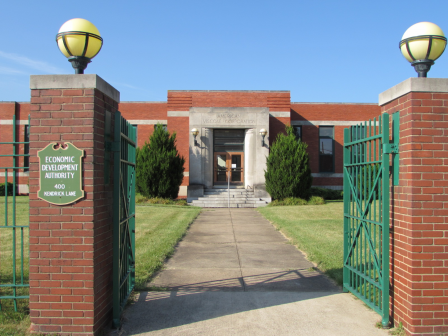 Avtex Fibers, Inc.The Avtex Fibers, Inc. Superfund site is in Front Royal, Virginia. A synthetic fiber manufacturing plant operated on the 440-acre site from 1940 to 1989. Improper waste disposal practices caused contamination of groundwater, water wells and the Shenandoah River. EPA added the site to the National Priorities List (NPL) in 1986. The potentially responsible party cleaned up the site. Cleanup included building demolition, demolition debris removal, sewer excavation, landfill/waste basin capping and contaminated soil removal. Groundwater and leachate cleanup is ongoing at a new treatment plant. During cleanup, the community worked on site reuse plans, assisted by an EPA grant to facilitate a public participation process. EPA advised site stakeholders, including the Front Royal-Warren County Economic Development Authority (EDA), the United States Soccer Foundation and FMC Corporation. Today, the site hosts a 240-acre ecological conservancy park along the Shenandoah River. In 2001, the EDA restored an on-site administration building for its offices and other tenants, including the Northern Shenandoah Valley Regional Planning Commission. Site stakeholders worked together to build soccer fields (the Skyline Soccerplex), a skate park and a picnic pavilion with a playground. The EDA is also developing the Royal Phoenix Business Park, a 162-acre commercial and industrial business park. The first building in the park has been constructed. The town of Front Royal has recently completed construction of a new police station on part of the Avtex property. Fully returning the site to reuse requires ongoing collaboration. EPA and the EDA worked together in 2014 to update land use agreements. The new agreements allow for mixed use of site property, which will support future redevelopment efforts. In September 2014, EPA Region 3 presented FMC Corporation, Warren County and the EDA with its Excellence in Site Reuse award for enabling the area’s productive reuse. EPA continues to support ongoing redevelopment at the site.
Avtex Fibers, Inc.The Avtex Fibers, Inc. Superfund site is in Front Royal, Virginia. A synthetic fiber manufacturing plant operated on the 440-acre site from 1940 to 1989. Improper waste disposal practices caused contamination of groundwater, water wells and the Shenandoah River. EPA added the site to the National Priorities List (NPL) in 1986. The potentially responsible party cleaned up the site. Cleanup included building demolition, demolition debris removal, sewer excavation, landfill/waste basin capping and contaminated soil removal. Groundwater and leachate cleanup is ongoing at a new treatment plant. During cleanup, the community worked on site reuse plans, assisted by an EPA grant to facilitate a public participation process. EPA advised site stakeholders, including the Front Royal-Warren County Economic Development Authority (EDA), the United States Soccer Foundation and FMC Corporation. Today, the site hosts a 240-acre ecological conservancy park along the Shenandoah River. In 2001, the EDA restored an on-site administration building for its offices and other tenants, including the Northern Shenandoah Valley Regional Planning Commission. Site stakeholders worked together to build soccer fields (the Skyline Soccerplex), a skate park and a picnic pavilion with a playground. The EDA is also developing the Royal Phoenix Business Park, a 162-acre commercial and industrial business park. The first building in the park has been constructed. The town of Front Royal has recently completed construction of a new police station on part of the Avtex property. Fully returning the site to reuse requires ongoing collaboration. EPA and the EDA worked together in 2014 to update land use agreements. The new agreements allow for mixed use of site property, which will support future redevelopment efforts. In September 2014, EPA Region 3 presented FMC Corporation, Warren County and the EDA with its Excellence in Site Reuse award for enabling the area’s productive reuse. EPA continues to support ongoing redevelopment at the site.
Last updated September 2019
As of December 2019, EPA had data on 10 on-site businesses. These businesses employed 43 people and generated an estimated $1,895,000 in annual sales revenue. For additional information click here.
For more information:
- Recreational and Ecological Use at Superfund Sites Story MapEXIT
- Press Release: EPA Announces Excellence in Site Reuse Awards at the Avtex Fibers Site, Front Royal, Virginia
- Superfund Site Profile Page
- Video: See Community Involvement Coordinator, Larry Johnson, highlight the recreational reuse of the Avtex Fibers Superfund Site after decades of environmental cleanup:
C & R Battery Co., Inc.
The 11-acre C & R Battery Co., Inc. Superfund site is in Chesterfield County, Virginia. The C & R Battery Company operated a battery breaker on site from 1973 to 1985. In the late 1970s, the Virginia State Water Control Board found elevated levels of lead in surface water, soil and groundwater. In 1983, the Virginia Occupational Safety and Health Administration inspected the site and found elevated lead levels in air inside the facility. After finding lead contamination in soil, surface water and groundwater, EPA placed the site on the National Priorities List (NPL) in 1987. A potentially responsible party at the site put the site’s remedy in place in 1992 and 1993. It included removal of contaminated soil and sediments, treatment of acid ponds, and removal of other contaminated debris. Planned institutional controls will restrict future site land uses to commercial and industrial uses. Businesses at the site include a heating and cooling company, truck storage for an ice company and a construction company.
Last updated September 2019
As of December 2019, EPA had data on 5 on-site businesses. These businesses employed 85 people and generated an estimated $18,619,128 in annual sales revenue. For additional information click here.
For more information:
Chisman Creek 


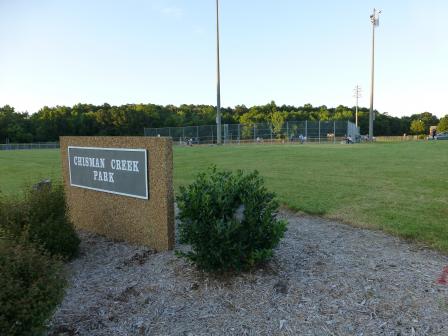 Chisman CreekThe Chisman Creek Superfund Site is in York County, Virginia. The 27-acre site consists of three former sand and gravel pits. From 1957 to 1974, Yorktown Power Generating Station used the abandoned sand and gravel pits to dispose of ash left over from burning fossil fuels. Testing found contamination from heavy metals in groundwater and the nearby Chisman Creek. EPA placed the site on the National Priorities List (NPL) in 1983. Under EPA oversight, Dominion Energy (formerly Virginia Power), the potentially responsible party (PRP), conducted cleanup activities. Cleanup included connecting nearby residents to the public water supply and placing a cap and soil cover over two areas of the site. It also included groundwater collection, modification of surface water drainage pathways and surface water monitoring. The cleanup preserved nearby wetlands and became part of a larger water quality improvement effort that led to the reopening of the Chisman Creek estuary for fishing. After cleanup, the PRP worked with EPA, the state, local officials and the community on plans for two recreational parks at the site. Chisman Creek Park opened in 1991. Wolf Trap Park opened in 1992. These parks provide much-needed soccer and softball fields for the community. Wolf Trap Park is also home to the County Memorial Tree Grove, which provides an opportunity for friends to commemorate lost loved ones.
Chisman CreekThe Chisman Creek Superfund Site is in York County, Virginia. The 27-acre site consists of three former sand and gravel pits. From 1957 to 1974, Yorktown Power Generating Station used the abandoned sand and gravel pits to dispose of ash left over from burning fossil fuels. Testing found contamination from heavy metals in groundwater and the nearby Chisman Creek. EPA placed the site on the National Priorities List (NPL) in 1983. Under EPA oversight, Dominion Energy (formerly Virginia Power), the potentially responsible party (PRP), conducted cleanup activities. Cleanup included connecting nearby residents to the public water supply and placing a cap and soil cover over two areas of the site. It also included groundwater collection, modification of surface water drainage pathways and surface water monitoring. The cleanup preserved nearby wetlands and became part of a larger water quality improvement effort that led to the reopening of the Chisman Creek estuary for fishing. After cleanup, the PRP worked with EPA, the state, local officials and the community on plans for two recreational parks at the site. Chisman Creek Park opened in 1991. Wolf Trap Park opened in 1992. These parks provide much-needed soccer and softball fields for the community. Wolf Trap Park is also home to the County Memorial Tree Grove, which provides an opportunity for friends to commemorate lost loved ones.
Last updated September 2019
As of December 2019, EPA did not have economic data related to on-site businesses, or economic data were not applicable due to site use. For additional information click here.
For more information:
- Video: In the Moment with Andrea Bain:
- Pioneering Recreational Reuse: The Chisman Creek Superfund Site in York County, Virginia (PDF)(9 pp, 3.4 MB)
- Superfund Site Profile Page
Culpeper Wood Preservers, Inc.
The 20-acre Culpeper Wood Preservers, Inc. Superfund site is an active wood treatment facility in Culpeper County, Virginia. Site activities and disposal practices resulted in the contamination of soil, sediment, groundwater and surface water. In 1981, Jefferson Homebuilders, the site’s potentially responsible party (PRP), removed contaminated soil and controlled contaminated runoff. EPA placed the site on the National Priorities List (NPL) in 1989. EPA and the PRP are conducting studies to determine the extent of contamination. The PRP supplies several homes with bottled water. EPA is working to finalize cleanup plans for the site. Culpeper Wood Preservers continues to operate its facility at the site.
Last updated September 2019
As of December 2019, EPA had data on one on-site business. This business employed 10 people and generated an estimated $3,000,000 in annual sales revenue. For additional information click here.
For more information:
Dixie Caverns County Landfill 
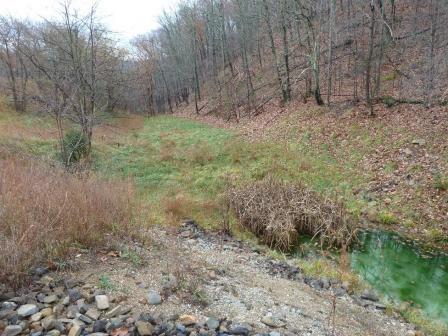 Dixie Caverns County LandfillThe 39-acre Dixie Caverns County Landfill Superfund site is in Salem, Virginia. Roanoke County operated the unlicensed municipal landfill from 1965 to 1976. The landfill accepted municipal and industrial wastes. Facility operations contaminated soil and sediment. EPA placed the site on the National Priorities List (NPL) in 1989. Cleanup activities included removal and treatment of fly ash and removal, treatment and disposal of contaminated stream sediments. After cleanup, EPA took the site off the NPL in 2001. In 2012, the county put land use controls in place to make sure the landfill will not be disturbed. The Roanoke County Police Department has redeveloped the site as a police training facility, with a driving training course, a classroom building and an outdoor shooting range.
Dixie Caverns County LandfillThe 39-acre Dixie Caverns County Landfill Superfund site is in Salem, Virginia. Roanoke County operated the unlicensed municipal landfill from 1965 to 1976. The landfill accepted municipal and industrial wastes. Facility operations contaminated soil and sediment. EPA placed the site on the National Priorities List (NPL) in 1989. Cleanup activities included removal and treatment of fly ash and removal, treatment and disposal of contaminated stream sediments. After cleanup, EPA took the site off the NPL in 2001. In 2012, the county put land use controls in place to make sure the landfill will not be disturbed. The Roanoke County Police Department has redeveloped the site as a police training facility, with a driving training course, a classroom building and an outdoor shooting range.
Last updated September 2019
As of December 2019, EPA had data on one on-site business. EPA did not have further economic details related to this business. For additional information click here.
For more information:
- Redevelopment of the Dixie Caverns Landfill Superfund Site (PDF)(2 pp, 1.9 MB)
- Superfund Site Profile Page
Former Nansemond Ordnance Depot 
The 975-acre Former Nansemond Ordnance Depot Superfund site is in Suffolk, Virginia. Starting in 1917, the U.S. Department of Defense used the area for munitions storage, shipment, classification, reconditioning, loading and destruction. The facility handled up to 1,300 tons of ammunition daily. At the end of World War II, the U.S. Department of Defense used the Depot for demobilization, including the destruction of unserviceable explosives, ammunition and chemicals. The Depot closed in the early 1960s. After a site inspection identified hazardous substances on site, EPA placed the site on the National Priorities List (NPL) in 1999. EPA identified extensive contamination in disposal pits, fill and demolition areas, holding tanks, trenches and offshore dumping areas. Cleanup included the removal of munitions, explosives, contaminated debris, military items and contaminated soil. Various types of redevelopment have taken place at the site. Interstate 664 was built across part of the site. The Hampton Roads Sanitation District built a wastewater treatment plant on site. Various commercial and industrial businesses now operate on the site, including the 708,000-square-foot Bridgeway Business Center.
Last updated September 2019
As of December 2019, EPA had data on 26 on-site businesses. These businesses employed 733 people and generated an estimated $60,229,552 in annual sales revenue. For additional information click here.
For more information:
- Superfund Site Profile Page
- Video: Superfund Success - Atlantic Wood Industries & Former Nansemond Ordnance Depot
Saltville Waste Disposal Ponds 
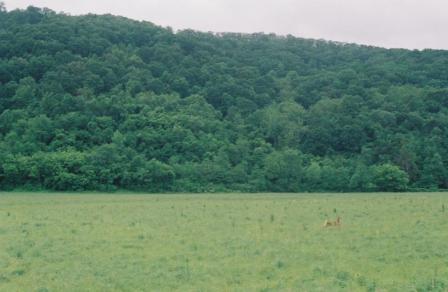 Saltville Waste Disposal PondsThe Saltville Waste Disposal Ponds Superfund site is located on the border of Smyth and Washington counties along the North Fork of the Holston River in Virginia. The site covers 125 acres. It includes two large former waste disposal ponds and the former location of a chlorine manufacturing plant. Site investigations in the 1970s identified high mercury levels in site soil and groundwater. Investigations found contamination in sediments of the North Fork of the Holston River as far as 80 miles downstream of the site. The two waste disposal ponds on site contained mercury and alkaline waste material. EPA added the site to the National Priorities List (NPL) in 1983. The site’s potentially responsible party (PRP) conducted cleanup activities. Initial cleanup included dredging contaminated sediments from the river, diverting clean surface water around the disposal ponds, and installing and operating a water treatment system. In 2003, the PRP installed a RCRA cap over one disposal pond, a soil cover over another disposal pond, and planted grasses, shrubs and trees over the cover. This revegetation supports a wildlife habitat area.
Saltville Waste Disposal PondsThe Saltville Waste Disposal Ponds Superfund site is located on the border of Smyth and Washington counties along the North Fork of the Holston River in Virginia. The site covers 125 acres. It includes two large former waste disposal ponds and the former location of a chlorine manufacturing plant. Site investigations in the 1970s identified high mercury levels in site soil and groundwater. Investigations found contamination in sediments of the North Fork of the Holston River as far as 80 miles downstream of the site. The two waste disposal ponds on site contained mercury and alkaline waste material. EPA added the site to the National Priorities List (NPL) in 1983. The site’s potentially responsible party (PRP) conducted cleanup activities. Initial cleanup included dredging contaminated sediments from the river, diverting clean surface water around the disposal ponds, and installing and operating a water treatment system. In 2003, the PRP installed a RCRA cap over one disposal pond, a soil cover over another disposal pond, and planted grasses, shrubs and trees over the cover. This revegetation supports a wildlife habitat area.
Last updated September 2019
As of December 2019, EPA did not have economic data related to on-site businesses, or economic data were not applicable due to site use. For additional information click here.
For more information:
Saunders Supply Co.
The 7-acre Saunders Supply Co. Superfund site is in Suffolk County, Virginia. A wood-treating plant operated on site until 1991. Improper use, treatment and disposal of wood-treating chemicals resulted in contamination of soil and groundwater on site and off site. EPA added the site to the National Priorities List (NPL) in 1989. Cleanup included disposal of contaminated material, soil incineration, groundwater monitoring and placement of use restrictions on the site property. Later, EPA included groundwater treatment to protect Godwin’s Millpond, a source of drinking water for the city of Suffolk. The Saunders Supply Company’s lumberyard continued to operate during the cleanup, which finished in 1999. Groundwater treatment and monitoring are ongoing. Saunders Supply Company continues to operate a lumberyard on site. The company also owns and operates a hardware store just south of the site. Contamination also impacted an adjacent nursery.
Last updated September 2019
As of December 2019, EPA had data on 2 on-site businesses. These businesses employed 20 people and generated an estimated $5,100,000 in annual sales revenue. For additional information click here.
For more information:
U.S. Titanium 
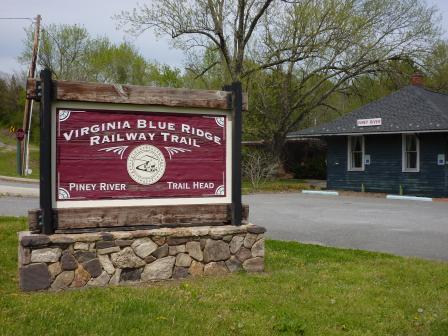 U.S. TitaniumThe U.S Titanium Superfund site is located on the north side of Piney River in Nelson County, Virginia. The site includes 50 acres of a 175-acre titanium dioxide manufacturing plant that operated from 1931 to 1971. Byproducts of titanium dioxide manufacturing and heavy metals contaminated soil, surface water and groundwater. There were six major fish kills in the Piney and Tye Rivers between 1977 and 1981. Acidic groundwater seeps and acidic stormwater runoff from on-site waste piles and ponds contributed to these fish kills. EPA added the site to the National Priorities List (NPL) in 1983. Under EPA oversight, the site’s potentially responsible party (PRP) removed and treated contaminated soil and placed it in a containment cell. The PRP also treated acidic stream beds and adjacent soil and built a groundwater treatment plant on site. Cleanup also included earthwork to reduce contamination resulting from rainwater flowing across the site. After cleanup, a group of citizens in Amherst and Nelson Counties worked with local governments to obtain Rails-to-Trails grant funding. They converted the former Blue Ridge Railroad right-of-way on site into a hiking path and public recreation resource.
U.S. TitaniumThe U.S Titanium Superfund site is located on the north side of Piney River in Nelson County, Virginia. The site includes 50 acres of a 175-acre titanium dioxide manufacturing plant that operated from 1931 to 1971. Byproducts of titanium dioxide manufacturing and heavy metals contaminated soil, surface water and groundwater. There were six major fish kills in the Piney and Tye Rivers between 1977 and 1981. Acidic groundwater seeps and acidic stormwater runoff from on-site waste piles and ponds contributed to these fish kills. EPA added the site to the National Priorities List (NPL) in 1983. Under EPA oversight, the site’s potentially responsible party (PRP) removed and treated contaminated soil and placed it in a containment cell. The PRP also treated acidic stream beds and adjacent soil and built a groundwater treatment plant on site. Cleanup also included earthwork to reduce contamination resulting from rainwater flowing across the site. After cleanup, a group of citizens in Amherst and Nelson Counties worked with local governments to obtain Rails-to-Trails grant funding. They converted the former Blue Ridge Railroad right-of-way on site into a hiking path and public recreation resource.
Last updated September 2019
As of December 2019, EPA did not have economic data related to on-site businesses, or economic data were not applicable due to site use. For additional information click here.
For more information:
